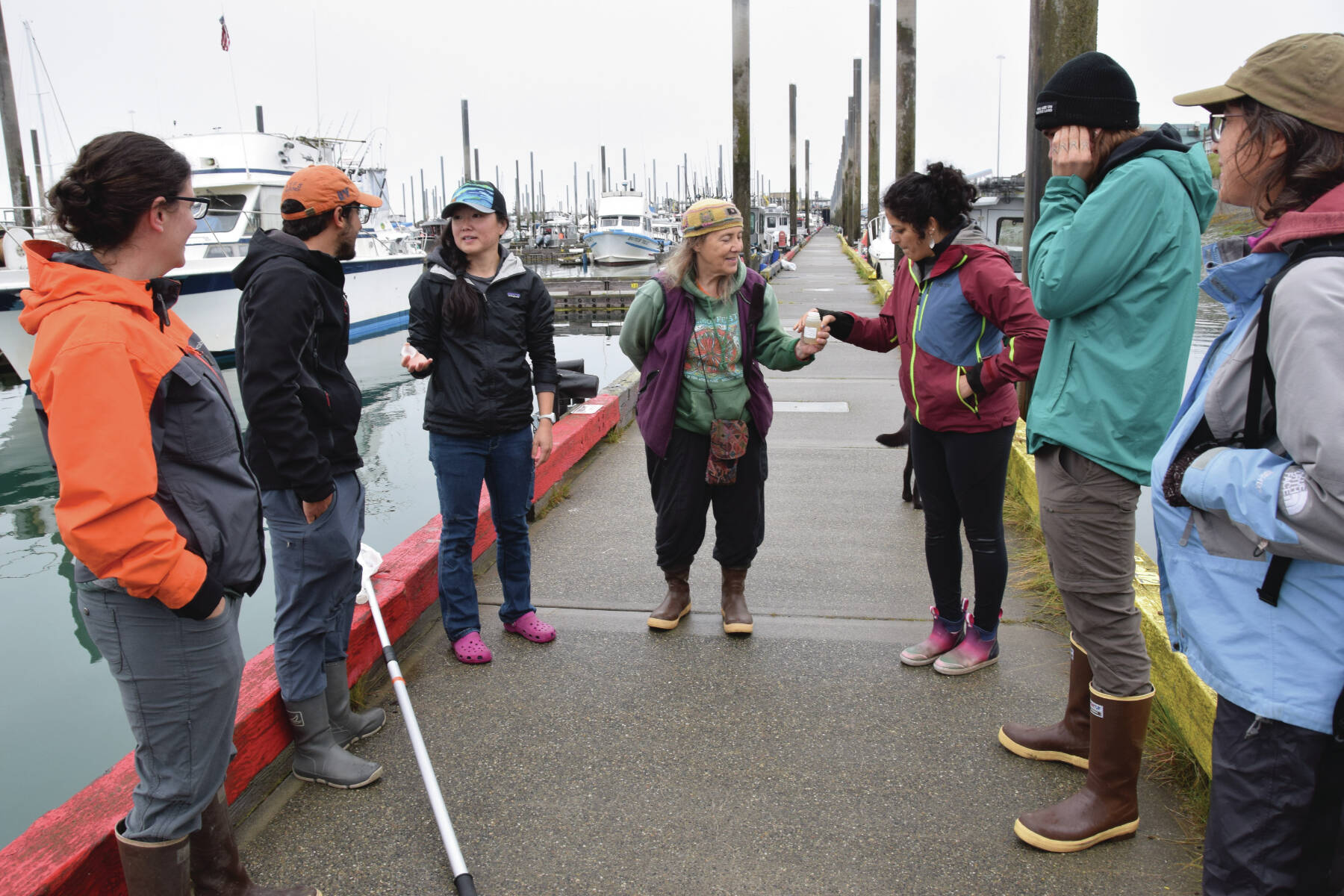The Kachemak Bay Research Reserve last week hosted a community workshop with members from various organizations to discuss the purpose of using environmental DNA (eDNA) for the purposes of research science, management and more. The first day of the workshop provided an overview of the general concept of what eDNA can be used for and how it might contribute to community partnerships.
Participating agencies included the National Oceanic and Atmospheric Administration, the U.S. Park Service, U.S. Fish and Wildlife Service and Alaska Department of Fish and Game. Other organization representatives included Center for Alaskan Coastal Studies, Kachemak Bay Birders, the Kachemak Heritage Land Trust and the Kachemak Bay Watershed Collaboration. Also present were members from tribal organizations and educational institutions, both at the university level and instructors from local elementary schools.
Dr. Shimi Rii and Casey Ching with the He’eia Research Reserve on Oahu, Hawaii, facilitated a hands-on activity and small group discussion to explain and explore questions around the concepts of eDNA. Participants at the event were at wide range of understanding of the concept so Rii and Ching also provided a basic description of what eDNA collection means.
It is the process of taking a biological sample of something like water, soil or glacier ice and analyzing it for DNA in order to identify details of what the sample contains. Examples of biological traces in a sample include things like: larvae, scales, feces, skin, eggs, sperm, plankton, kelp or mucus.
The sample might be collected for the purpose of determining the presence or absence of a species, either to see if it’s something missing that was once present at a particular location or to detect an invasive species or something like a harmful algal bloom. It also can be used for basic environmental monitoring.
One of the ways the Research Reserve does this is with community monitors, local volunteers both in Homer and in locations across the bay collect water samples and return them to reserve for processing.
During the workshop, attendees shared some of projects they are using eDNA for.
One research sample —collected from conference participant Eric Wood from the Soldotna Department of Fish and Game on Thursday — was from Beluga Lake where a siting of invasive pike was reported.
Because of the volume of floatplanes on Beluga Lake, Wood also discussed the issue of invasive elodea in Alaska lakes, particularly in the Matanuska-Susitna region.
Elodea is an invasive submerged aquatic plant used in fish tanks and is often spread by floatplanes. There are confirmed infestations in lakes in Anchorage, Fairbanks, Cordova and the Kenai Peninsula, according to a flyer published by ADF&G and other natural resource agencies.
Another use for eDNA that representatives from the Chugach Corporation is an ongoing study in search of spawning herring sites at various locations in Prince William Sound.
Rii also discussed the issue of cleanliness and possible contamination when collecting samples. If sample gear is not appropriately sterile both before a collection is taken and once the collection is housed before analysis, accuracy may be compromised.
Rii and Wood said that there is typically a lag time between when a sample is collected and analysis but that technology is advancing to read gene sequences on-site.
The first day of the conference ended with a session on eDNA research ethics related to protocols for proposing research, planning for data management and sovereignty of information generated and collected in coastal communities.
On Friday, workshop participants joined Research Reserve crew for water sample collections in Homer Harbor.


